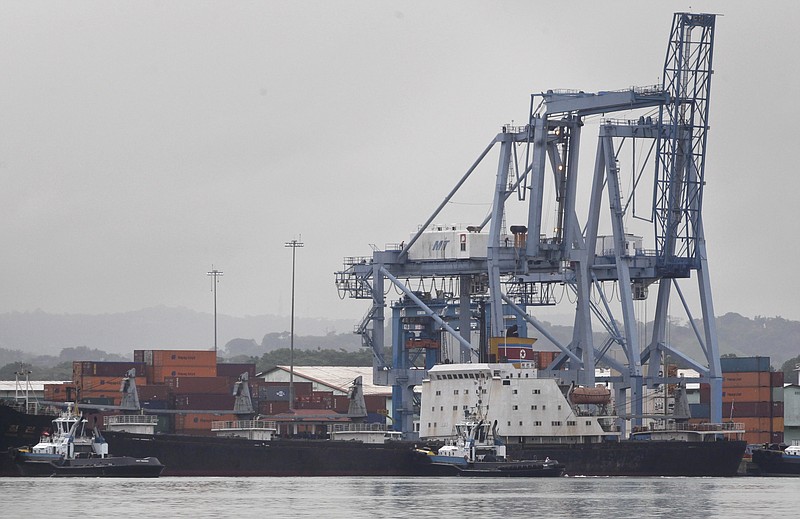PANAMA CITY (AP) - A North Korean ship carrying weapons system parts buried under sacks of sugar was seized as it tried to cross the Panama Canal on its way from Cuba to its home country, which is under a United Nations arms embargo, Panamanian officials said Tuesday.
The ship appeared to be transporting a radar-control system for a Soviet-era surface-to-air missile system, according to a private defense analysis firm that examined a photograph posted on Twitter by Panamanian President Ricardo Martinelli.
Martinelli said the ship identified as the 14,000-ton Chong Chon Gang was carrying ballistic missiles and other arms, but he provided no specific evidence or details about the cargo. He said on his Twitter account that the arms were "hidden in containers underneath the cargo of sugar."
The photo posted by the president shows a green tube that appears to be a horizontal antenna for the SNR-75 "Fan Song" radar, which used to guide missiles fired by the SA-2 air-defense system found in former Warsaw Pact and Soviet-allied nations, said Neil Ashdown, an analyst for IHS Jane's Intelligence.
Jane's isn't sure where the system in the photo was manufactured but the radar would be useful to North Korea as part of a dense air defense network, Ashdown said.
"It is possible that this could be being sent to North Korea to update its high altitude air-defense capabilities," he said.
Panamanian authorities believe the ship was returning from Havana on its way to North Korea, Panamanian Public Security Minister Jose Raul Mulino told the Associated Press. Based on unspecified intelligence, authorities suspected it could be carrying contraband and tried to communicate with the crew, who didn't respond.
The 35 North Koreans on the boat were arrested after resisting police efforts to intercept the ship in Panamanian waters on Thursday as it moved toward the canal and take it to the Caribbean port of Manzanillo, Martinelli told private RPC radio station. The captain had a heart attack and also tried to commit suicide during the operation, Martinelli said.
Panamanian officials were finally able to board the ship to begin searching it Monday, pulling out hundreds of sacks of sugar.
The illicit cargo "seems to be a type of missile, of rocket. Next to them there's another container that appears to have a type of control system," said Luis Eduardo Camacho, a spokesman for Martinelli. He said authorities had only searched one of the ship's five container sections, and the inspection of all the cargo will take at least a week.
"This material not being declared and Panama being a neutral country, a country in peace, that doesn't like war, we feel very worried about this war material and we don't know what else will have ... passed through the Panama Canal," Martinelli said.
The governments of North Korea and Cuba made no public comment on the case.
Satellite tracking records show it left the Pacific Coast of Russia on April 12 with a stated destination of Havana, then crossed the Pacific and the Panama Canal on its way to the Caribbean. It disappeared from satellite tracking until it showed up again on the Caribbean side of the canal, on Friday, Lloyd's said.
The disappearance from satellite tracking indicates that the crew may have switched off a device that automatically transmits the ship's location after it moved into the Caribbean, Lloyd's said.

